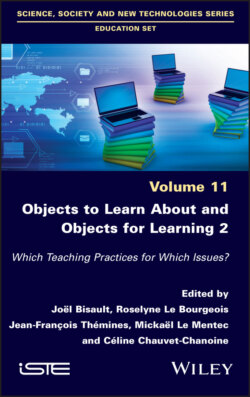Читать книгу Objects to Learn about and Objects for Learning 2 - Группа авторов - Страница 26
1.5. Evaluation periods
ОглавлениеWhat can we say about the evaluation of this mechanism? To understand and take account of the activity, I chose to suggest, in addition to the collective wall version, other copies of the three maps (world, Europe, France) with clue labels for the pupils so they could practice, in groups, during free work time, identifying and locating the points of reference. In addition to this form of training, which was threaded and codified through the year, four more formal evaluation periods were regularly spaced through the year (October, December, March, May). Table 1.7 shows the results of the six best results in relation to the set of points of references used during each period (6 in October, 12 in December, 24 in March and May). In October, I chose to provide the pupils with a simple planisphere because there were only six points of reference. For the three other periods, I used a two-page spread (A3) including all of the maps (planisphere, map of Europe, map of France) to be clearer, as well as a table where the pupils could fill in the names of cities, countries and continents as necessary for each point of reference. This protocol was important because some pupils preferred to fill out the table, where they sometimes found it easier to identify the spatial relations, before beginning to fill out the maps.
Table 1.8 shows the frequency of cumulative responses for the maps and tables, with a number of elements worthy of interpretation. We can see at once the heavy weight of the oldest points of reference: the first three points of reference suggested (number 1 – Tower of Pisa, number 2 – Eiffel Tower, number 3 – Statue of Liberty) were precisely the three most successfully identified points of reference. We can also see a strong centering on the global scale, since the Tower of Pisa was the only representative in Europe (in green), and the low number of occurrences for the statue of Jean Bart and the Lascaux Caves, which only weakly reinforced the total number attributed to France (in blue). America (in pink), especially the United States, was the dominant continent for identifications on a global scale. Animals occurred somewhat frequently, such as the kangaroo and the kiwi for Oceania (in orange) and the penguin for Antarctica (in black). Asia (in red) was only weakly represented, with two occurrences of the Burj Khalifa Tower.
Table 1.7. Evaluation of points of reference through the six most frequently correct identifications
The pre-eminence of the oldest points of reference in the list of those most precisely identified was magnified by an affective dimension (spatial and cultural proximity of the Eiffel Tower as the symbol of France, the strong cultural and linguistic influence of the United States and a childhood sensitivity toward animals). However the successes/failures had other spatial explanations: the inclusion of the penguin despite the continent of Antarctica’s lack of development indicates that the pupils had grasped the idea of climate zones; the infrequent occurrence of the Amazon forest and the absence of capoeira indicates that they were located too close together, causing confusion, and that the map had to be read more carefully (the point of reference for capoeira pointed to the center of Brazil, while the Amazon forest was located at the country’s borders); the statue of Jean Bart was legitimately more local for pupils from Tourcoing than the Cliffs at Etretat or the Château de Pau.
Table 1.8. Frequency of occurrence for the most precisely identified points of reference
| No. | Point of Reference | Frequency |
| 2 | Eiffel Tower | 7 |
| 1 | Tower of Pisa | 6 |
| 3 | Statue of Liberty | 6 |
| 12 | Hollywood | 6 |
| 8 | Kangaroo | 5 |
| 4 | Amazon forest | 2 |
| 11 | Burj Khalifa Tower | 2 |
| 14 | Penguin | 2 |
| 15 | Statue of Jean Bart | 2 |
| 9 | Kiwi | 1 |
| 15 | Lascaux Caves | 1 |
| 5 | Dumont d’Urville Station | 1 |
| 6 | Easter Island statues | 1 |
Was there also some overload for pupils, a threshold past which they could add no more? The results of the six most precise identifications in Table 1.7 must be complemented by the overall average, which struggled to reach 50%. During the March evaluation, the pupils got an average of 42% right on the maps, compared to 43% for the tables; in May, the percentage increased to 48% for the maps and 49% for the tables. Identification of maps was therefore slightly better. Improvement, despite a constant volume of work on the 24 points of reference between March and May, was also limited. These averages obviously masked wide gaps between pupils with grades approaching 100%, for whom it would have been possible to add more, and others who had practically not participated in the process.
The object, although different from computers in the freedom of content creation and the manipulation with which it is associated, remains engraved in some pupils’ minds as a purely academic tool, without achieving the status of a didactic tool. Finally, it should be pointed out that the classroom in which this experiment occurred was particularly outdated (no curtains, no video projector) and therefore not well suited for viewing landscape photos, satellite images or virtual globes, which would have provided support for this process from time to time.
